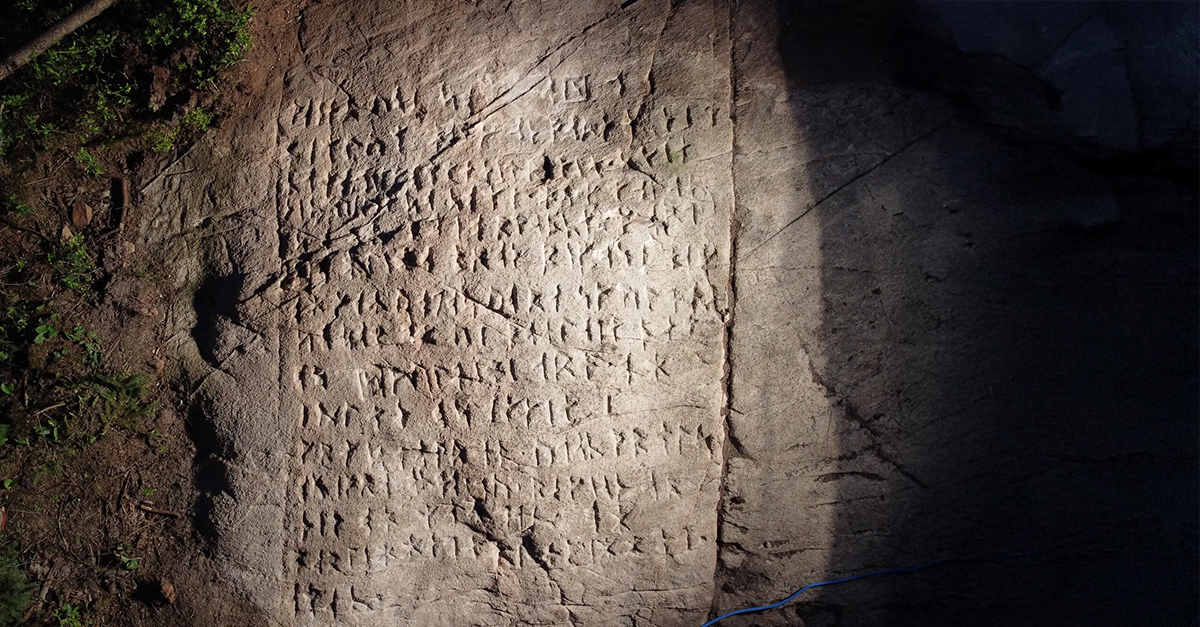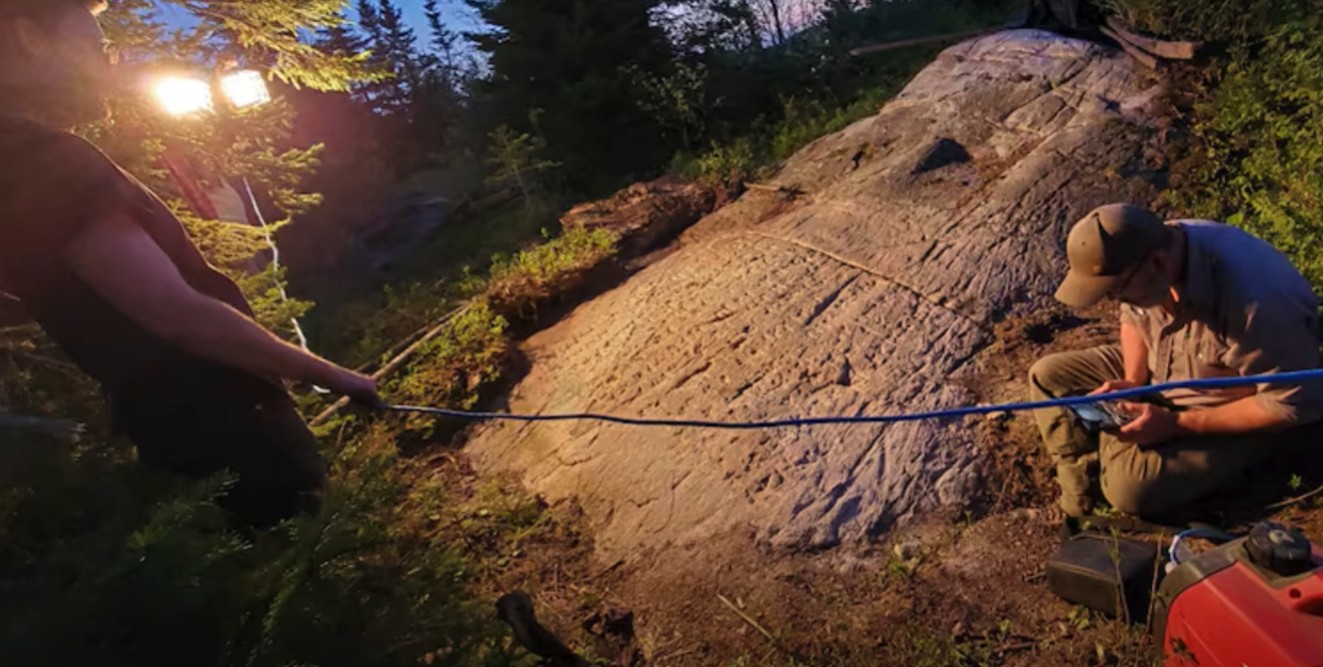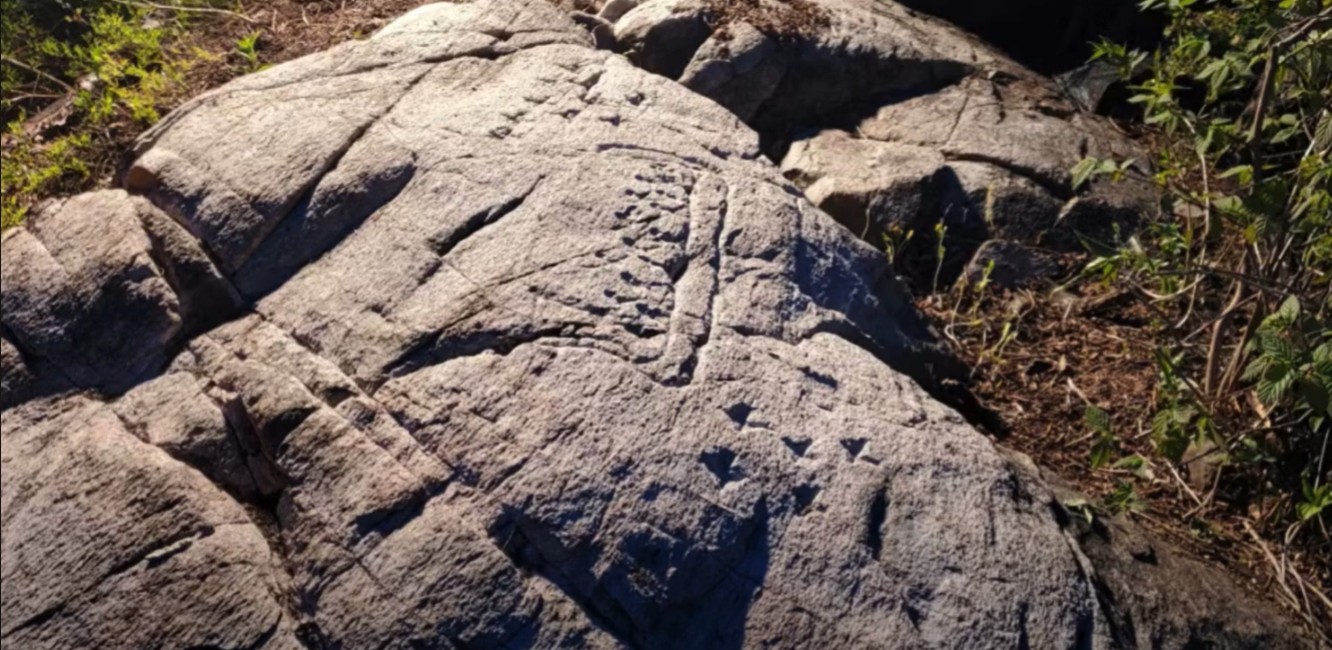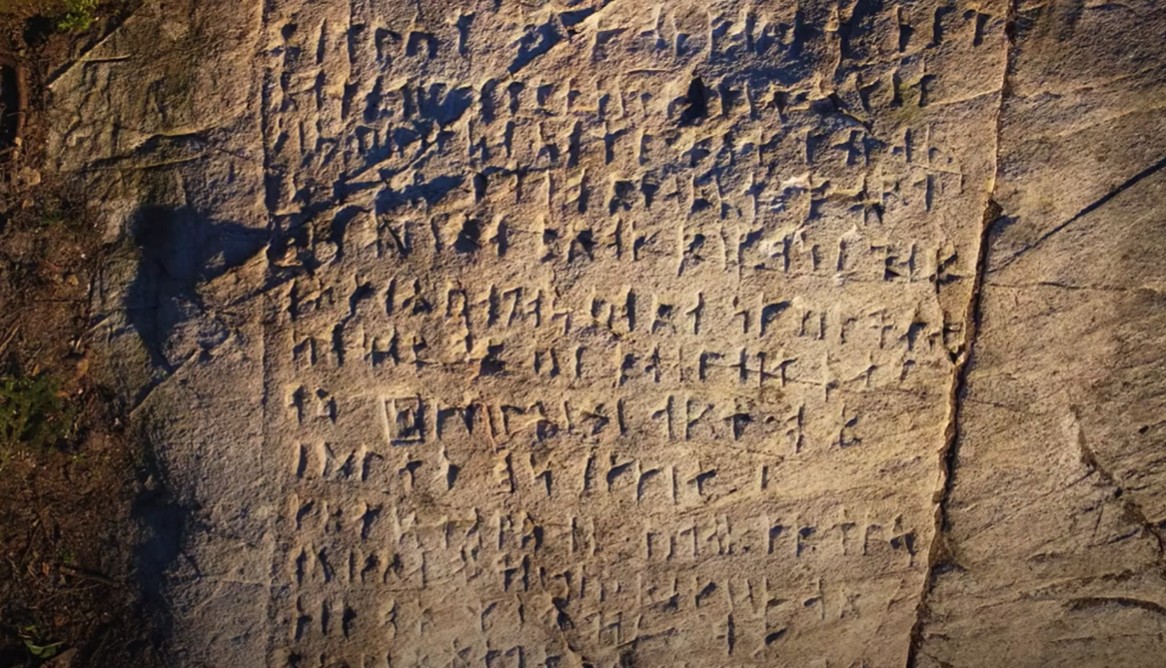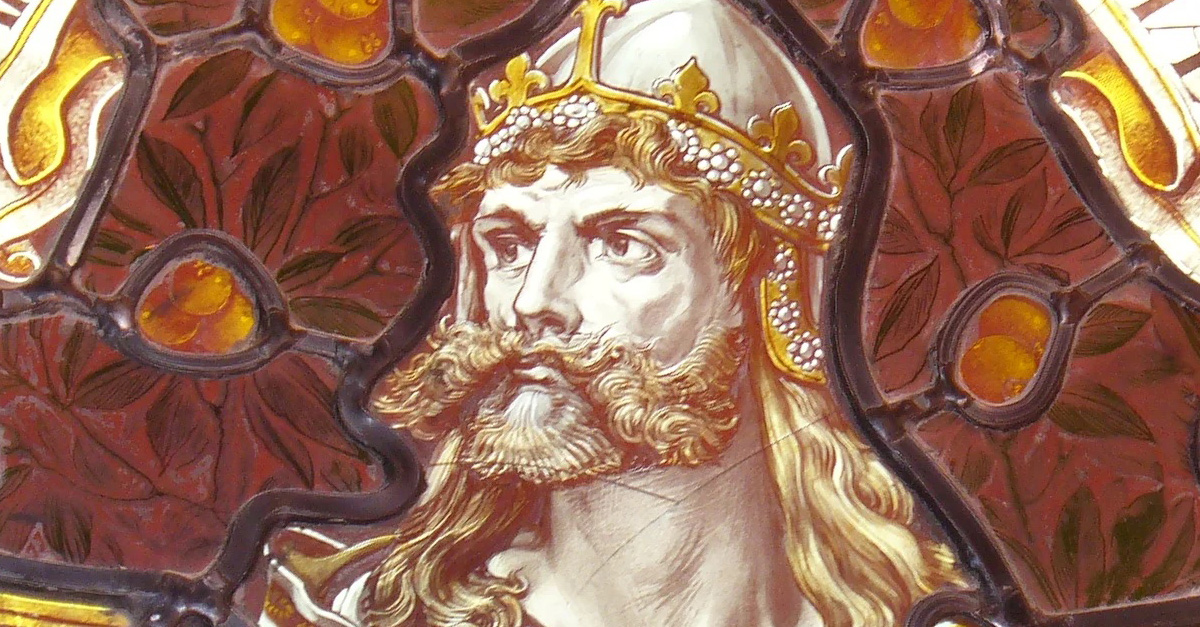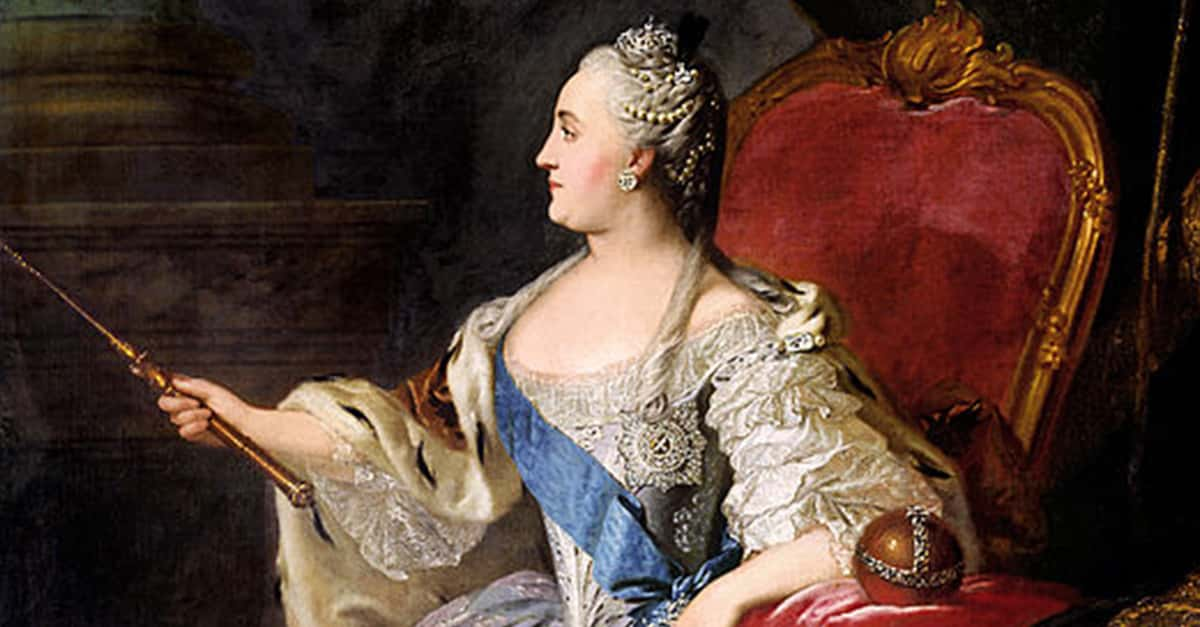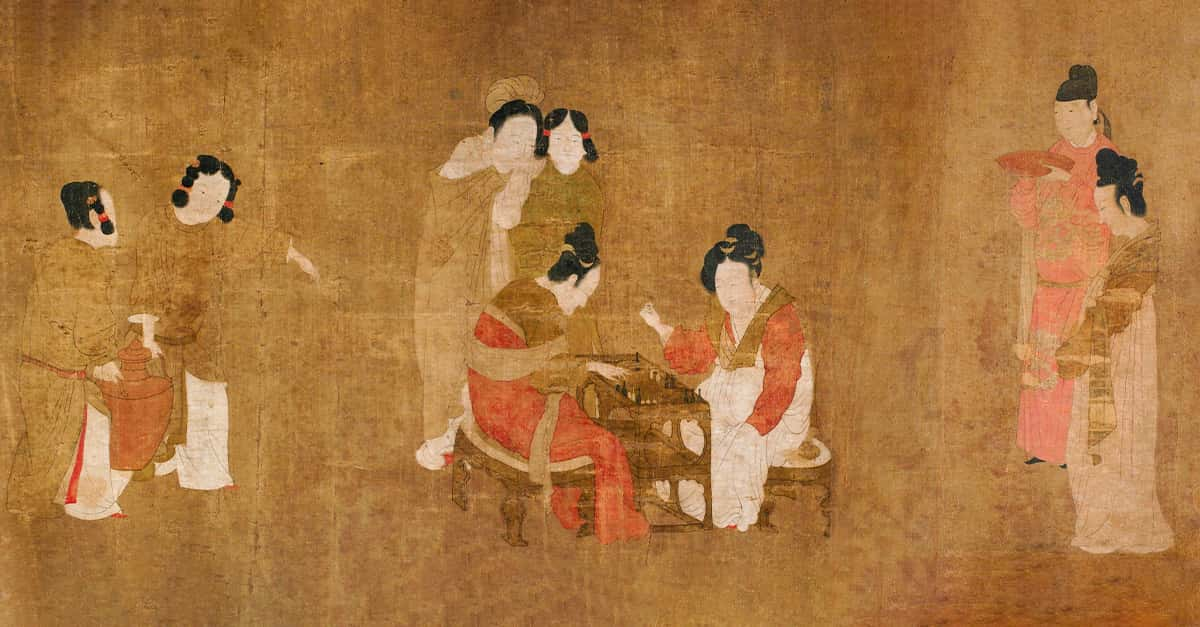In 2018, after a huge tree toppled over in a forest near Wawa, Ontario, a stunning object was revealed: a large slab of bedrock etched with strange symbols. Initially thought to be ancient petroglyphs, the stone drew attention for its 255 rune-like carvings and a depiction of a boat. Researchers were flummoxed at first, but they began to put the story of the runestone together, and have recently reached a long-awaited verdict on the stone’s origin.
A Runologist's Final Word
Experts from the Ontario Centre for Archaeological Research & Education (OCARE) worked quietly, trying mightily not to make any premature speculations. In 2019, at their wit's end, they finally invited runologist Henrik Williams from Uppsala University to weigh in on the matter. Williams dismissed the notion of Viking origin as fantasy. He says the carvings represent a Swedish-language version of the Lord’s Prayer, dating from translations made in 1611 by Johannes Bureus, and used in the 17th century.
A Distant, But Not Too Distant Past
Radiocarbon dating and historical context point to the carver being a 19th-century Swedish immigrant working for the Hudson’s Bay Company. Swedish laborers were stationed at remote trading posts such as Michipicoten, close to Wawa. The style and overlay of soil suggest the runestone might have been purposely buried after it was carved.
Making Sense Of The Complete Inscription
The Wawa Runestone is one of a kind: it’s the longest runic inscription in North America, and the only one to contain the full text of the Lord’s Prayer. The carved boat, containing 16 figures and marked by 14 crosses, hints at a deeper symbolic meaning hidden within the mysterious runestone. Experts are still undecided on whether it served for communal worship or was just the project of one person.
This Rune Stone Is Authentic
This find corrects earlier suspicions, like those surrounding the Kensington Runestone, which many people think is a hoax. Unlike those controversies, the Wawa Runestone is supported by archival, linguistic, and contextual evidence. This North American runestone is the real McCoy!
Why Does It Even Matter?
The runestone gives insight into the culture and religious practices of Swedish workers in 19th-century Canada. It adds to the story of Swedish migration, identity, and religious faith in a rugged land far from home. It also deepens our knowledge of how runic writing was used outside Europe.
Preserving Access For A Curious Public
After careful study, OCARE made the discovery public in June 2025. They’re now working with the property owners to preserve the rock and install some kind of protective barrier. Plans include accurate documentation, site interpretation, and maybe even opening the site as a heritage destination for tourists.
Lots Of Hard Work Left To Do
Scholars are still struggling with core mysteries: why is this text here, of all places, in the boondocks of northwestern Ontario? Was it part of a gathering-place for spiritual reflection, or the creative act of a loner? The reason for the deliberate burial is also still unknown. Ongoing archival work and site analysis may yet bring answers to these lingering questions.
The Viking Imprint
The Wawa Runestone is a relic of Swedish immigrants in 19th-century Canada and their cultural identity as descendants of the Vikings. As conservation and interpretation work carries on, this amazing find will add color and depth to Canada’s diverse history.
You May Also Like:
Adventurous Facts About Leif Erikson
25 Berserk Facts About Erik The Red, The Father Of The Vikings

